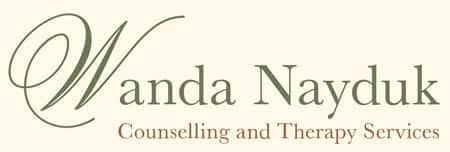Attachment Therapy
Attachment Therapy
Attachment Disorders in Adults: Types, Symptoms and Treatment
Attachment disorder refers to the various difficulties associated with reading emotions, showing affection and trusting others. These disorders often start in childhood, and they can affect everything from someone’s self-esteem to relationship satisfaction. Treatment can help people become more aware of their attachment styles and learn how to communicate their needs with other’s properly.
What is attachment?
Attachment refers to how we connect, trust and otherwise attach to people. This theory focuses on relationships, such as the dynamics between a child and a caregiver or two romantic partners. Within the therapeutic context, therapists may explore the attachment between the client and themselves.
There are four types of attachment styles:
• Secure attachment: It is easy for me to become emotionally close to others. I am comfortable depending on them and having them depend on me. I don’t worry about being alone or having others not accept me.
• Anxious attachment: I want to be completely emotionally intimate with others, but I often find that others are reluctant to get as close as I would like. I am uncomfortable being without close relationships but I sometimes worry that others don’t value me as much as I value them.
• Avoidant/dismissive attachment: I am comfortable without close emotional relationships. It is very important to me to feel independent and self sufficient, and I prefer not to depend on others or have others depend on me.
• Disorganized attachment: I am uncomfortable getting close to others. I want emotionally close relationships, but I find it difficult to trust others completely, or to depend on them. I worry that I will be hurt if I allow myself to become to close to others.
How do Attachment Issues Develop?
Attachment disorders typically develop during childhood based on the quality and quantity of caregiving a person receives. When someone receives care, love and support, they will likely have secure attachments. If there were problems with inconsistent, unsupportive, or unfulfilling care, an attachment issue could develop.
Attachment issues could develop or present into adolescence and adulthood if someone experiences a string of unhealthy problematic relationships.
How are Adult Attachment Disorders Treated?
Attachment-based therapists agree that it’s possible to become more aware of triggers that provoke withdrawal or anxiety. By understanding these triggers, you can learn how to change your responses. You can also learn how to resolve traumatic wounds that might by stunting your ability to attach securely to others.
Attachment based therapy helps clients express emotions, rebuild intimacy with others, and increase an overall sense of trust. This approach can be used in conjunction with other therapeutic models, such as Cognitive Behavioural therapy (CBT), or Psychodynamic Therapy.
In general, therapy aims to provide a safe and trusting relationship between therapist and client. This kind of relationship can be invaluable for someone who struggles with attachment.
How to Help Someone You Care About with an Attachment Disorder?
As a loved one, you are not responsible for “fixing” your partner or other loved one’s disorder. That said, you can be a supportive compassionate anchor as they work through their recovery. Practicing patience and empathy are vital for offering support. It is important to check in with your partner and maintain open communication to determine what is or isn’t working.
It’s also important to be aware of your part in the dynamic. Self awareness allows you to recognize your behaviours and interpret how your partner might respond to them. For instance, certain patterns, such as withdrawing if you’re stressed or lashing out when you become angry may trigger unhealthy dynamics. It can cause excess tension and strain. However, by focusing on how you can both grow as individuals you might be able to achieve greater relational satisfaction.
Attachment disorders can be challenging, but treatment can help. You can learn how to build meaningful, wholehearted relationships with others. It’s also possible to learn how to start trusting people again, even if you’ve always struggled with it. Therapy can make a profound difference in helping you take the first step in the right direction.
Attachment Disorders in Adults: Types, Symptoms and Treatment
Attachment disorder refers to the various difficulties associated with reading emotions, showing affection and trusting others. These disorders often start in childhood, and they can affect everything from someone’s self-esteem to relationship satisfaction. Treatment can help people become more aware of their attachment styles and learn how to communicate their needs with other’s properly.
What is attachment?
Attachment refers to how we connect, trust and otherwise attach to people. This theory focuses on relationships, such as the dynamics between a child and a caregiver or two romantic partners. Within the therapeutic context, therapists may explore the attachment between the client and themselves.
There are four types of attachment styles:
• Secure attachment: It is easy for me to become emotionally close to others. I am comfortable depending on them and having them depend on me. I don’t worry about being alone or having others not accept me.
• Anxious attachment: I want to be completely emotionally intimate with others, but I often find that others are reluctant to get as close as I would like. I am uncomfortable being without close relationships but I sometimes worry that others don’t value me as much as I value them.
• Avoidant/dismissive attachment: I am comfortable without close emotional relationships. It is very important to me to feel independent and self sufficient, and I prefer not to depend on others or have others depend on me.
• Disorganized attachment: I am uncomfortable getting close to others. I want emotionally close relationships, but I find it difficult to trust others completely, or to depend on them. I worry that I will be hurt if I allow myself to become to close to others.
How do Attachment Issues Develop?
Attachment disorders typically develop during childhood based on the quality and quantity of caregiving a person receives. When someone receives care, love and support, they will likely have secure attachments. If there were problems with inconsistent, unsupportive, or unfulfilling care, an attachment issue could develop.
Attachment issues could develop or present into adolescence and adulthood if someone experiences a string of unhealthy problematic relationships.
How are Adult Attachment Disorders Treated?
Attachment-based therapists agree that it’s possible to become more aware of triggers that provoke withdrawal or anxiety. By understanding these triggers, you can learn how to change your responses. You can also learn how to resolve traumatic wounds that might by stunting your ability to attach securely to others.
Attachment based therapy helps clients express emotions, rebuild intimacy with others, and increase an overall sense of trust. This approach can be used in conjunction with other therapeutic models, such as Cognitive Behavioural therapy (CBT), or Psychodynamic Therapy.
In general, therapy aims to provide a safe and trusting relationship between therapist and client. This kind of relationship can be invaluable for someone who struggles with attachment.
How to Help Someone You Care About with an Attachment Disorder?
As a loved one, you are not responsible for “fixing” your partner or other loved one’s disorder. That said, you can be a supportive compassionate anchor as they work through their recovery. Practicing patience and empathy are vital for offering support. It is important to check in with your partner and maintain open communication to determine what is or isn’t working.
It’s also important to be aware of your part in the dynamic. Self awareness allows you to recognize your behaviours and interpret how your partner might respond to them. For instance, certain patterns, such as withdrawing if you’re stressed or lashing out when you become angry may trigger unhealthy dynamics. It can cause excess tension and strain. However, by focusing on how you can both grow as individuals you might be able to achieve greater relational satisfaction.
Attachment disorders can be challenging, but treatment can help. You can learn how to build meaningful, wholehearted relationships with others. It’s also possible to learn how to start trusting people again, even if you’ve always struggled with it. Therapy can make a profound difference in helping you take the first step in the right direction.
Serving Simcoe County For Over 35 Years
Conveniently and centrally located, serving our clients with psychotherapy and counselling including but not limited to Barrie, Orillia, Midland, Innisfil, Angus, Bradford, Bracebridge, Gravenhurst


